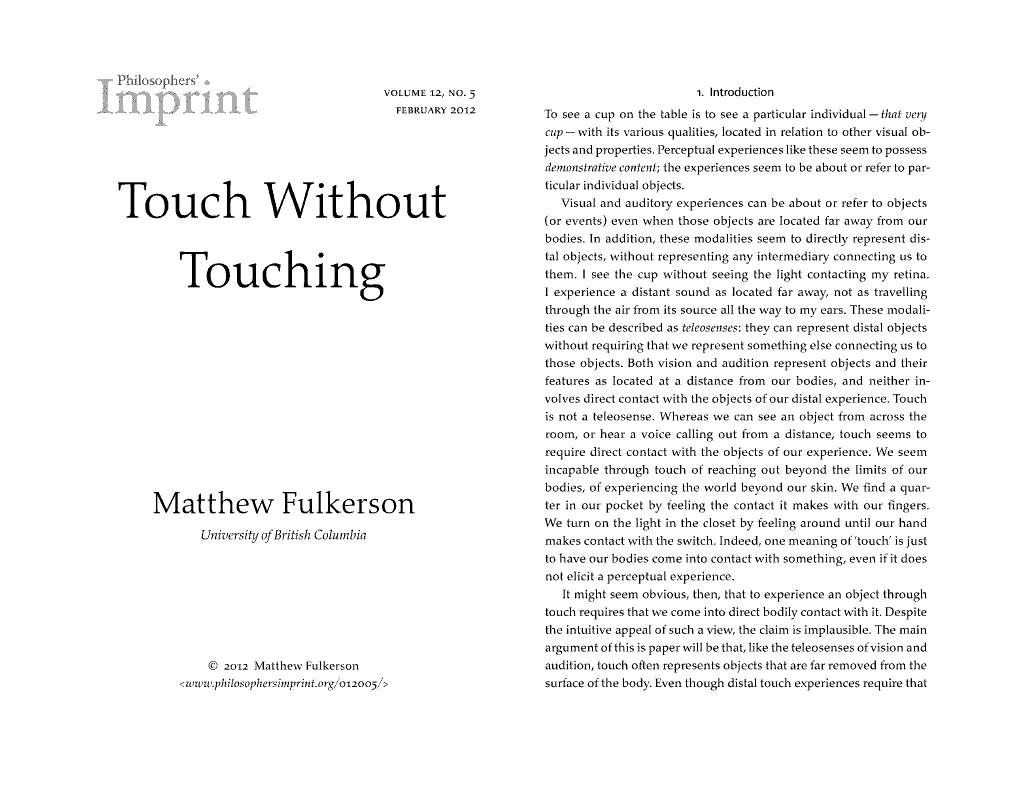Touch Without Touching
Skip other details (including permanent urls, DOI, citation information): This work is licensed under a Creative Commons Attribution-NonCommercial-NoDerivatives 3.0 License. Please contact [email protected] to use this work in a way not covered by the license.
For more information, read Michigan Publishing's access and usage policy.
Abstract
In this paper, I argue that in touch, as in vision and audition, we can and often do perceive objects and properties even when we are not in direct or even apparent bodily contact with them. Unlike those senses, however, touch experiences require a special kind of mutually interactive connection between our sensory surfaces and the objects of our experience. I call this constraint the Connection Principle. This view has implications for the proper understanding of touch, and perceptual reference generally. In particular, spelling out the implications of this principle yields a rich and compelling picture of the spatial character of touch.



